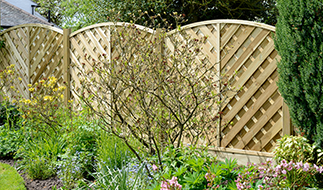Choosing Wooden Gate Hinges
- Gates
- Railings
- Fencing
- Accessories
& Fitting- Sheds
& Storage- Garden Structures
- Design
& StyleMetal Gates & Railings- Info
& Help2018-12-10
So you have ordered your new gates in the perfect size to fit your opening, had them delivered and are all ready to get on with the installation when you realise you have not got the hinges and accessories required to complete the installation. Now what? You can huff and puff and blame us for not making it clear these are not included (trust us we do make this very clear on our website) or you can read the advice below to find out what are the best hinges to choose for your particular gate design.
What Hinges to Select?
Finding an appropriate hinge that is compatible with a given gate may seen confusing however in reality is very simple. Listed below are the different types of hinges available and when and where they should be used.
Hook & Band Hinges
As the name suggests hook and band hinges are made up of just that. The hook part is formed using a metal pin welded onto a metal plate. The band portion of the hinge is a length of flat metal with a rolled cylindrical section on it. This in effect forms a hole that slots over the top of the pin allowing the gate to pivot around this fixed point.
Commonly used for heavier gate designs this type of hinge is available in 12”, 18”, 24” and 36” band sizes and in essence the larger the gate the larger the hinges should be. For example a small garden gate may need only a single pair of 12” hinges but a large set of 6ft high wooden driveway gates may need 3 pairs of 36” to provide adequate support. If you are unsure please speak with us for advice.
In addition to size considerations, hook and band hinges are available as a fixed hinge option (where no adjustment of the gate can be made if they need to levelled of have the spacings altered slightly) or an adjustable design (allowing for small adjustments to be made when installing).
Where are the hinges installed on the gates? Hook and band hinges are designed to be installed to either the front or back face of the gate depending on the opening configuration required. The band portion extends onto the gate and is bolted and screwed in place. The hook part is surface mounted onto the back of the posts (or brick pillars if not using timber posts).


To prevent them being lifted off we recommend reversing the top hook so it points downwards.
Examples of our framed gate designs that are suitable for this type of hinge are the Gloucester, Derbyshire, Buxton and Quorn garden gate and our Drayton, Essex, Norfolk and Windsor wooden driveway gate design.
T Hinges
The name “T Hinge” refers to the shape it forms. Made up of a thin length of metal (usually 12”, 18, or 24” in length) they are connected to a metal plate with holes in that allow the strap to pivot around the fixed point. Due to the thinner metal gauge used in their construction we only recommend T Hinges are used with our unframed ledge and braced gate designs as these weigh considerably less than our premium framed gates.
Where are they installed? For inward opening gates the T Hinges should be installed onto the back face of the gate and post. The hinges should be located so the long strap part sits in-line with the horizontal bracing so it can be fixed completely flat to the timber surface. For outward opening gates the hinges will need to be mounted onto the front face of the gate. The hinges should again line up with the rear horizontal bracing so that a firm fixing of screws can be achieved.
In some instances the wall mounted part of the hinge can be mounted between the opening however this is not something we recommend.
Gate designs suitable for this type of hinge include our Carlton, Devon and Dorset side gate and our Carlton double gate design.
Butt hinges
Whilst it may be cheaper and therefore tempting to hang the gates using the same hinge design as used on your front door this is not something that we recommend. Wooden gates are much heavier and wider than most residential doorways and as such place higher stresses on the hinges. Butt hinges are simply not up to the job and should never be used. End of discussion!
- Railings



